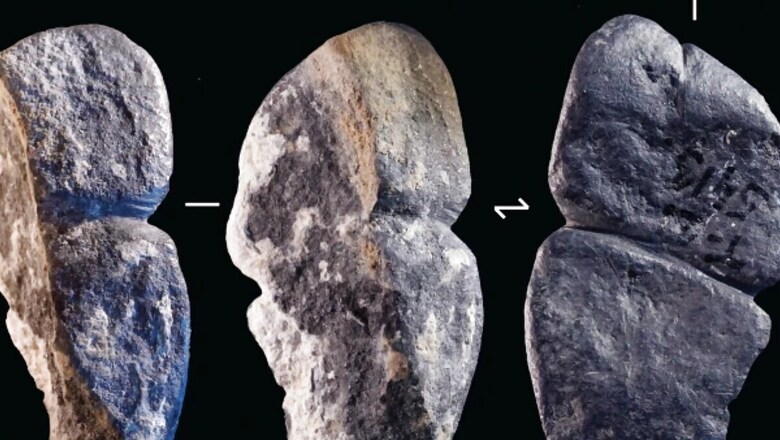
views
Researchers have discovered an ancient oblong artefact that could potentially be the earliest phallic figurine ever found. It is dating back approximately 42,000 years. The object, labelled T21, was unearthed at an archaeological site in Mongolia in 2016 but has only recently undergone closer examination by archaeologist Solange Rigaud and her team from the University of Bordeaux. The study published in Scientific Reports says it measures 4 centimetres (1.6 inches) in length. The ornament displays two grooves that were created using a pointed stone tool. One groove encircles the midsection of the artefact, while the other runs deep from the top, leading researchers to believe that the former represents the glans of a penis and the latter depicts a urethral opening.
Science Alert reported, similar features have been observed in a 28,000-year-old stone pebble found in Germany, which is considered one of the earliest representations of male sexuality. Although the interpretation of the Mongolian artefact is less distinct, if the researchers’ hypothesis is correct, it could signify the earliest symbolic use of human genitalia in history.
The smooth and shiny “back” side of the ornament suggests that it may have been worn as a pendant. It might have been secured in place by a cord wrapped around the middle groove. The exact purpose of wearing such a pendant remains uncertain. However, it is unlikely to have served as a visual signal due to its inconspicuous appearance from a distance. Instead, researchers speculate that it may have been worn for personal or spiritual reasons, similar to the belief in ancient Rome that penis motifs could enhance fertility or repel evil spirits.
The discovery challenges the notion that figurative depictions in art emerged around 50,000 years ago and were restricted to our species. The presence of such symbolism among hunter-gatherer communities at an early stage suggests the use of anatomical attributes as symbols during their dispersal in the region. The pendant’s creation aligns with the estimated time frame for early interbreeding events between Homo sapiens and Denisovans, adding another layer of intrigue to its historical significance.
While the exact purpose of the artefact may never be definitively determined, the researchers argue that their analysis supports the interpretation of the T21 pendant as a simplified phallic representation. Its discovery provides valuable insights into ancient symbolism and the cultural practices of early human societies.



















Comments
0 comment